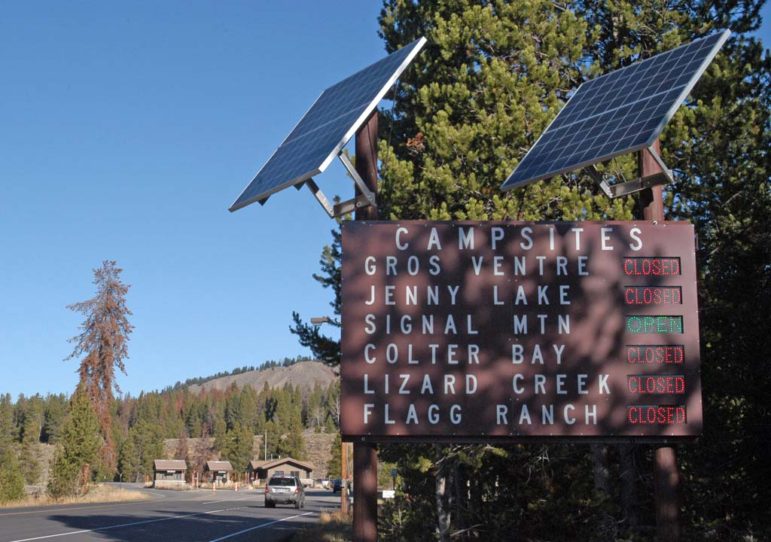
The 16-day closure of Grand Teton National Park forced visitors to scrap long-planned vacations, and it cost local small business owners badly needed fall revenue. But it also left cash registers empty at the bookstores and entry gates that help fund the park.
Based on 2012 October visitation numbers and a solid increase in park traffic so far this year, Grand Teton missed out on collecting an estimated $150,000 in entrance fee revenues during the shutdown, said Superintendent Mary Gibson Scott.
Approximately 200 National Park Service employees were furloughed during the shutdown, Scott told reporters during a Thursday afternoon conference call.
But those workers will end up getting paid all back wages, despite being prohibited from working during the partial government shutdown. That means a loss in productivity but no savings in salaries, along with a huge drop in gate fees.
A large portion of gate fees are returned to the park where they are collected to fund local operations. The same is true with money earned from book and gift sales in visitor centers.
The Grand Teton Association lost an estimated $160,000 in sales revenue, said executive director Jan Lynch.
The nonprofit group operates bookstores in several Grand Teton visitor centers, and ended up releasing 15 employees early when the park closed, Lynch said in a separate interview.
“They would have worked all the way through October and into early November, but we couldn’t have them just sit and wait,” she said.
“We were on track to have a banner year,” Lynch said. “But when this happened, everything that we gained throughout the summer got eaten up.”
The Association helped fund some visitor center operations this year after budget cuts under Sequestration would have brought closures. Lynch said trail work or other fall projects normally funded by the Association will be eliminated or cut back due to the shutdown.
“But it’s not just us. Everybody got hit hard,” she said. “Fishing guides, people that do workshops in the park—this place is still very busy during the first two weeks of October because of the fall colors.”
Scott said a crew of about 40 worked during the closure to enforce laws, patrol park boundaries and perform other essential services.
Rangers issued approximately 15 citations for closure violations during the shutdown, Scott said.
She defended her agency’s much-criticized practice of placing barricades at roadside pullouts, saying that not all such spots were closed. The practice was a “method of controlling the perimeter,” particularly at recreation and backcountry access points, Scott said.
Scott said the closure was “demoralizing” for Park Service workers, and that she heard several “heartbreaking” stories about visitors whose long-planned trips were disrupted or ruined.
Lynch said her staff members, who work in visitor centers alongside government employees, witnessed instances of rude and aggressive visitor behavior, particularly during the first day of the shutdown.
Local federal land managers “had no choice in how they dealt with the shutdown,” Lynch said. “They had specific directions from higher up.”
Some visitors at the Jackson Hole & Greater Yellowstone Visitor Center located at the National Elk Refuge in Jackson, Wyo. cursed at staffers and made obscene gestures as the facility’s doors were closed. The Association, which operates a bookstore in the federally owned building, also was forced to cease operations there during the shutdown.
For Lynch, the temporary eviction was particularly exasperating.
It was the Association that in 2011 paid off the mortgage on the building and donated the structure to the National Elk Refuge.
Contact Ruffin Prevost at 307-213-9818 or [email protected].
